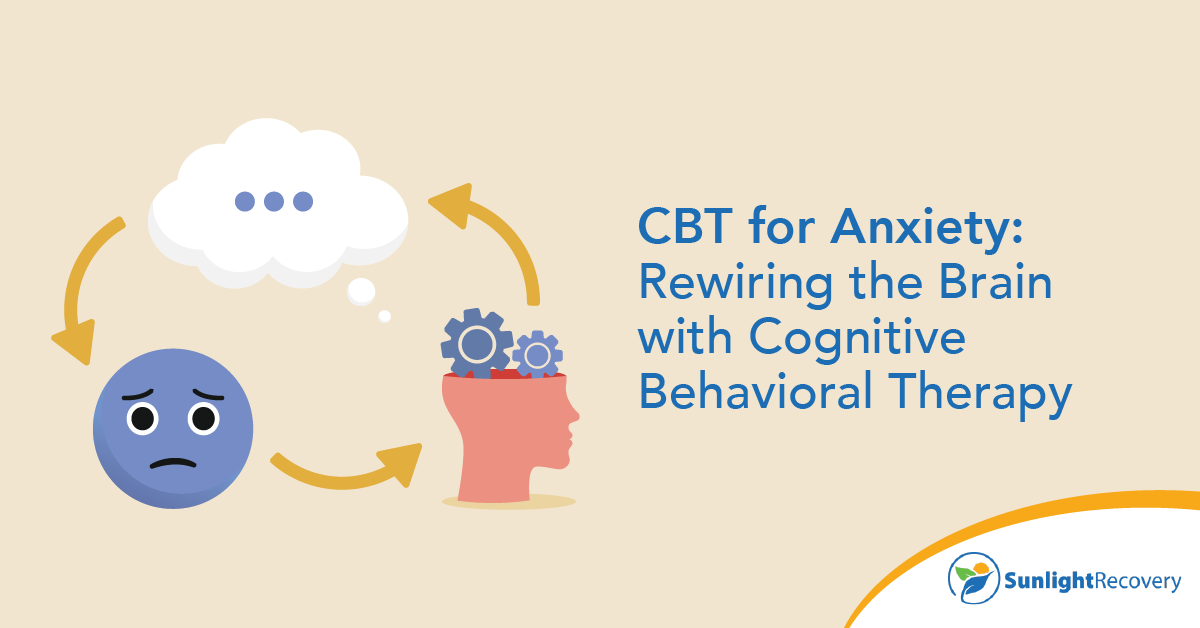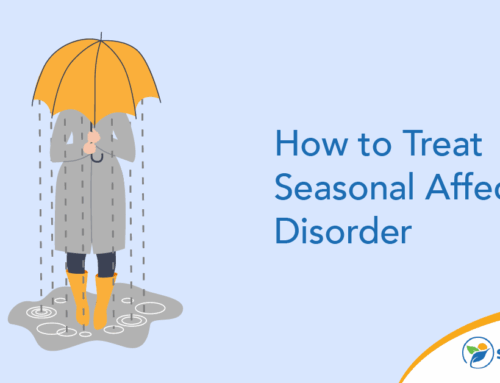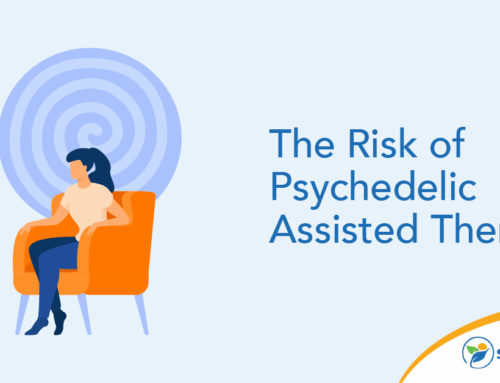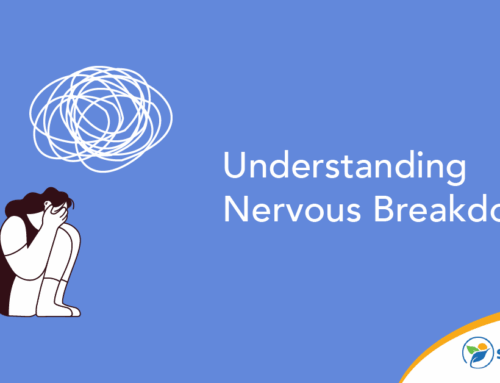Anxiety is one of the most common mental health disorders reported in the United States, with roughly 20% of people reporting an anxiety disorder in 2023 and about 30% reporting an anxiety disorder at some point during their lives. For those living with an anxiety disorder, everyday tasks and interactions can cause a disproportionate amount of stress. CBT for anxiety has become a popular option for managing uncomfortable symptoms and regaining a sense of control.
What Is CBT and How Does It Work?
Cognitive behavioral therapy is one of the most effective modalities for managing anxiety disorders. This research-backed treatment is based on the idea that an individual’s thought processes have a direct impact on their behaviors.
Definition and Origins of CBT
Cognitive behavioral therapy for anxiety focuses on the connection between thoughts, feelings and behaviors. It was developed by Dr. Aaron T. Beck in the 1960s, who noticed that his patients’ thought processes had a direct impact on how they acted. Over the decades following its development, it’s become one of the most studied forms of behavioral therapy for anxiety.
Core Principles of CBT
CBT is built around the idea that how an individual thinks creates a framework for how they feel and interact with the world. For example, someone with an anxiety disorder may perceive danger in situations that others consider harmless, such as talking to someone they don’t know or boarding a plane.
CBT seeks to uncover the way someone thinks and challenges the negative or unhelpful thought patterns. It also incorporates some behavioral changes, often through homework assignments, to reinforce healthier thinking and reduce avoidance behaviors.
Why CBT Is Commonly Used for Anxiety Disorders
CBT is widely considered the gold standard for treating anxiety disorders due to its strong track record of effectiveness across a variety of anxiety disorders, including generalized anxiety, social anxiety, panic disorders and phobias. It’s typically used as a first-line treatment by mental health care professionals.
Understanding Anxiety Through Thought Patterns
Numerous studies show that someone with anxiety perceives the world differently than a nonanxious individual. Because CBT highlights the role of negative thinking, challenges automatic thoughts and links anxious thoughts to physical symptoms, it’s an effective treatment in anxiety management.
- The Role of Negative Thinking
Those living with anxiety disorders are prone to cognitive distortions. These are inaccurate or exaggerated thought patterns that affect how individuals see themselves, others and the world around them.
Because of these distortions, the individual experiences ongoing worry and fear, and they go out of their way to avoid certain situations or places. CBT for anxiety focuses on identifying and challenging these distorted thoughts and makes them the target of treatment. - Automatic Thoughts and Anxiety Triggers
Automatic thoughts are the immediate thoughts someone experiences when faced with a certain situation. Most of the time, automatic thoughts go unnoticed until the individual experiences a strong emotional reaction. For someone with anxiety, automatic thoughts tend to be negative and distorted, and they may trigger feelings of embarrassment, dread or fear. - The Feedback Loop Between Thoughts and Physical Symptoms
The symptoms of anxiety aren’t limited to the mind; they also have a powerful effect on the body. Anxious thoughts can trigger physical symptoms, such as an increased heart rate, sweaty palms, muscle tension and dizziness.
These symptoms are a normal, healthy part of the body’s fight-or-flight response. However, for someone with an anxiety disorder, they reinforce anxious thoughts about situations that don’t present danger. In addition to fearing the situation itself, the individual also learns to fear the physical symptoms that stem from the anxiety. - How CBT Helps Break the Cycle
Cognitive behavioral therapy for anxiety disrupts this loop by challenging the anxious thoughts. During therapy sessions, individuals learn to become aware of the irrational thoughts and how they trigger physical responses. They also learn how to replace distorted thoughts with healthy, balanced ones.
Techniques Used in CBT for Anxiety
CBT incorporates a variety of techniques to challenge negative thoughts and retrain the brain. These techniques help individuals recognize distorted thinking and learn strategies for coping with symptoms.
Some common techniques include:
- Cognitive restructuring. This technique helps individuals learn to identify and challenge distorted thinking. It involves replacing negative thoughts with rational ones.
- Exposure therapy and desensitization. With CBT, individuals are gradually exposed to feared situations. Over time, they build tolerance by facing their fears.
- Journaling and thought records. Writing down unhelpful thoughts and their physical responses to them helps the individual recognize the connection between distorted thinking and their feelings and behaviors.
- Relaxation and mindfulness techniques. Individuals learn to manage their symptoms in anxious moments through techniques such as progressive muscle relaxation, grounding exercises and breathwork.
Brain Changes Associated With CBT
Cognitive behavioral therapy for anxiety does more than help the person develop more helpful frameworks for how they think. It plays a role in rewiring brain circuits and reduces activity in parts of the brain that cause anxious feelings.
Neuroplasticity and CBT
Neuroplasticity refers to the brain’s ability to adapt and reorganize itself by forming new neural connections. According to research, CBT helps reshape the brain by reducing activity in the amygdala, which is responsible for fear. It also strengthens the prefrontal cortex, which improves rational thinking and emotional regulation. Over time, individuals learn to respond to stressors with greater calm and clarity.
CBT’s Impact on Stress Hormones
CBT also improves how the body regulates cortisol levels, which affect the individual’s stress response. One study shows that CBT can reduce baseline cortisol levels, especially in those with anxiety disorders. It also helps flatten the natural cortisol rhythm, preventing cortisol spikes and helping the individual achieve better sleep and emotional regulation.
Long-Term Benefits of Cognitive Restructuring
CBT for anxiety doesn’t just change behavior; it alters the brain’s structure for long-term results.
Long-term benefits of cognitive restructuring include:
- Reduced risk of relapse. Through CBT, individuals learn self-reliance and long-term coping mechanisms, letting them benefit from treatment even after therapy concludes.
- Improved daily functioning. CBT for anxiety leads to improved sleep, concentration and interpersonal interactions.
- Greater emotional awareness and regulation. The individual is better able to recognize and regulate their emotional responses, which helps them manage stress and triggers more effectively.
- Support for co-occurring conditions. Along with treating anxiety, CBT is effective in treating disorders that often accompany it, such as depression, obsessive-compulsive disorder and post-traumatic stress disorder.
Take the First Step
At Sunlight Recovery, we specialize in treating anxiety through CBT. Contact us today to learn more about our treatment programs.







